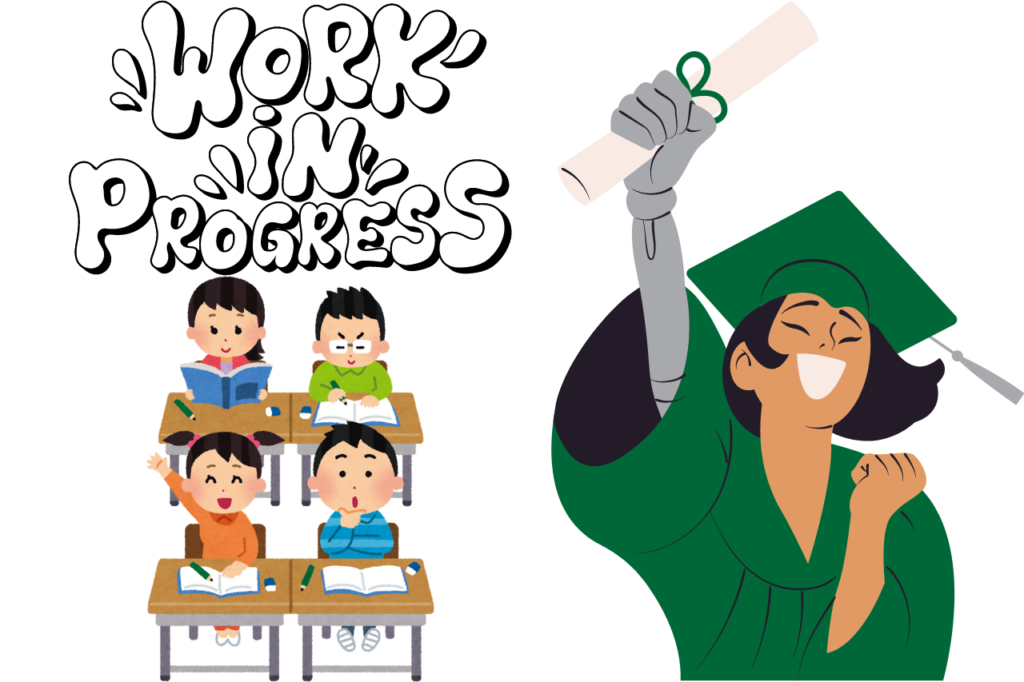Choosing the right Christian homeschooling curriculum is a pivotal decision for families seeking to provide a nurturing and faith-centered education for their children. Whether you’re starting your homeschooling journey or considering a switch, navigating the myriad options can be overwhelming. This guide dives deep into key considerations such as educational content, affordability, support services, and user feedback to help you make an informed choice that aligns with your values and meets your educational goals. Discover how to select a curriculum that not only educates but also enriches your child’s spiritual growth and academic development.

Table of Contents
Curriculum Content
Biblical Integration
When selecting a Christian homeschooling curriculum, one of the most important aspects to consider is biblical integration. This ensures that the curriculum not only provides academic education but also instills a strong Christian worldview. Here’s what to look for:

1. Consistency in Biblical Teachings
A good Christian homeschooling curriculum should weave biblical teachings consistently throughout all subjects. Whether it’s math, science, history, or literature, every lesson should reflect Christian values and perspectives. This integration helps students understand how their faith applies to every aspect of their lives, not just in religious studies.

2. Scripture-Based Lessons
Look for curriculums that use Scripture as a foundation for lessons. These programs often include Bible verses, stories, and principles as part of daily activities and teachings. This method reinforces biblical knowledge and encourages students to apply these lessons to their everyday decision-making.
3. Development of Christian Character
An effective Christian homeschooling curriculum focuses on the development of Christian character. It should include components that teach virtues such as honesty, kindness, patience, and integrity, all grounded in biblical principles. These character-building lessons are crucial for nurturing a well-rounded Christian individual.
4. Integration of Christian History and Heroes
Curriculums that highlight the contributions of Christian figures throughout history can be particularly enriching. Learning about missionaries, theologians, and other influential Christians provides students with role models and a sense of belonging to a larger Christian heritage.
5. Practical Application of Faith
Finally, a robust Christian homeschooling curriculum encourages students to put their faith into action. This might include community service projects, daily prayer and devotionals, or assignments that involve critical thinking about moral and ethical issues from a Christian perspective.
Academic Rigor
When selecting a Christian homeschooling curriculum, one of the most critical factors to consider is academic rigor. This term refers to the level of challenge, depth of content, and educational standards the curriculum maintains. Here’s how to assess academic rigor in Christian homeschooling programs:
1. Comprehensive Core Subjects
A rigorous Christian homeschooling curriculum covers all essential subjects comprehensively. This includes mathematics, language arts, science, social studies, and others pertinent to the student’s grade level. Each subject should be taught in-depth to ensure thorough understanding and mastery.

2. Depth of Subject Matter
Look for curriculums that go beyond surface-level learning. Rigorous programs delve deeply into each topic, offering detailed explanations, engaging activities, and opportunities for critical thinking and analysis. This depth encourages students to explore concepts thoroughly and develop a strong academic foundation.

3. Critical Thinking Skills
An academically rigorous curriculum emphasizes the development of critical thinking skills. It challenges students to think analytically, solve complex problems, and apply knowledge in practical scenarios. These skills are essential for academic success and lifelong learning.
4. Integration of Higher-Level Concepts
Choose a curriculum that integrates higher-level concepts appropriate for the student’s age and grade level. This includes advanced topics, interdisciplinary connections, and opportunities for independent research or projects that extend learning beyond basic comprehension.
5. Assessment and Feedback
Assessment is integral to academic rigor. Look for curriculums that provide regular assessments—such as quizzes, tests, projects, and assignments—that accurately measure student progress and understanding. Clear feedback mechanisms help students identify areas for improvement and celebrate achievements.

Grade Level Coverage
When evaluating a Christian homeschooling curriculum, it’s essential to consider the grade level coverage it offers. This aspect ensures that the curriculum aligns with educational standards and meets the developmental needs of students at different stages. Here’s what to look for:
1. Comprehensive Scope
A quality Christian homeschooling curriculum should provide comprehensive coverage across all grade levels, from kindergarten through high school. This means offering appropriate educational materials and learning activities tailored to each grade’s academic requirements.
2. Age-Appropriate Content
Ensure that the curriculum delivers content that is suitable for the age and developmental stage of the student. It should challenge and engage learners while respecting their cognitive abilities and maturity level.
3. Sequential Progression
Look for curriculums that follow a logical and sequential progression of skills and knowledge from one grade level to the next. This ensures that students build upon previously learned concepts and are adequately prepared for more advanced topics.

4. Flexibility for Multi-Grade Teaching
Consider whether the curriculum allows for flexibility in teaching multiple grade levels simultaneously, particularly in families with siblings or varying academic abilities. Adaptive resources and teaching strategies can facilitate effective multi-grade teaching.
5. Alignment with Educational Standards
Choose a curriculum that aligns with recognized educational standards for each grade level. This alignment ensures that students receive an education that meets or exceeds national benchmarks and prepares them for standardized testing and future academic pursuits.
Flexibility and Customizability
Flexibility and customizability are key considerations when selecting a Christian homeschooling curriculum, as they allow families to tailor education to meet individual student needs and preferences. Here’s what to look for:
1. Pacing and Scheduling Options
Choose a curriculum that offers flexibility in pacing and scheduling. This allows families to adjust the learning pace according to their child’s learning style, academic abilities, and family schedule.
2. Customizable Lesson Plans
Look for curriculums that provide customizable lesson plans. This feature enables parents to adapt lessons to fit their child’s interests, strengths, and areas needing improvement, fostering a personalized learning experience.
3. Variety of Learning Formats
Evaluate whether the curriculum offers a variety of learning formats, such as online modules, printable worksheets, interactive activities, and hands-on projects. This variety accommodates different learning styles and preferences.

4. Adaptability to Special Needs
Consider how well the curriculum accommodates special needs or learning differences. Flexible options for modifying assignments, providing additional support materials, or adjusting teaching strategies can benefit students with diverse learning needs.
5. Family and Faith Integration
Choose a curriculum that allows for integration of family values and faith principles into daily lessons. Flexibility in incorporating religious teachings and cultural values enhances the overall educational experience.

Spiritual Development
Spiritual development is a fundamental aspect of Christian homeschooling, aiming to nurture a child's faith alongside their academic growth. Here’s how to evaluate spiritual development in a curriculum:
1. Integration of Biblical Teachings
A strong Christian homeschooling curriculum integrates biblical teachings into all subjects, emphasizing the application of faith principles in daily life. This integration ensures that spiritual growth is woven into academic learning.
2. Character Formation
Look for curriculums that prioritize character formation based on biblical values. Lessons should focus on virtues such as honesty, kindness, forgiveness, and humility, guiding students in living out their faith in practical ways.

3. Prayer and Devotional Practices
Evaluate whether the curriculum incorporates regular opportunities for prayer, reflection, and devotional practices. These activities foster a personal relationship with God and encourage spiritual discipline and growth.

4. Study of Scripture
Choose a curriculum that includes structured study of Scripture, covering key biblical narratives, teachings, and principles relevant to the student's age and grade level. This study deepens biblical knowledge and understanding.

5. Service and Outreach
Consider how the curriculum encourages students to apply their faith through service and outreach to others. Opportunities for community service projects, missions awareness, and involvement in church activities promote active faith engagement.
Teaching Resources
Teacher's Guides and Lesson Plans
Teacher's guides and lesson plans are foundational components of a Christian homeschooling curriculum, providing structure and guidance for effective teaching and learning. Here’s what to consider:
1. Comprehensive Instructional Support
A quality Christian homeschooling curriculum should include comprehensive teacher's guides that offer detailed instructional support. These guides outline teaching objectives, lesson sequences, and suggested activities to achieve learning goals.

2. Clear Learning Objectives
Look for curriculums that clearly define learning objectives for each lesson or unit. Clear objectives help teachers and parents understand what students should learn and achieve, facilitating effective lesson planning and assessment.
3. Practical Application and Activities
Evaluate whether the curriculum includes practical application ideas and hands-on activities aligned with lesson content. These activities enhance student engagement and reinforce learning concepts in meaningful ways.
4. Alignment with Educational Standards
Choose a curriculum that aligns its teacher's guides and lesson plans with educational standards or benchmarks relevant to the student's grade level. This alignment ensures academic rigor and prepares students for standardized assessments.
5. Flexibility for Different Teaching Styles
Consider how well the curriculum accommodates different teaching styles and preferences. Flexible lesson plans allow teachers and parents to adapt teaching methods, pacing, and instructional strategies to meet individual student needs.

Supplementary Materials
Supplementary materials play a crucial role in enriching the learning experience within a Christian homeschooling curriculum, providing additional resources and activities to support academic growth. Here’s what to consider:
1. Variety of Resources
A robust Christian homeschooling curriculum should offer a variety of supplementary materials. These may include worksheets, study guides, quizzes, educational games, hands-on activities, and multimedia resources such as videos or interactive simulations.
2. Reinforcement of Concepts
Look for supplementary materials that reinforce and expand upon core concepts taught in the curriculum. These resources should provide opportunities for review, practice, and application of knowledge to enhance understanding and retention.
3. Alignment with Learning Objectives
Evaluate whether the supplementary materials align with the curriculum’s learning objectives and academic standards. Well-aligned resources ensure coherence and consistency in teaching and learning across different subjects and grade levels.
4. Accessibility and Ease of Use
Consider how accessible and user-friendly the supplementary materials are for both students and parents. Clear instructions, organized content, and intuitive navigation enhance usability and facilitate independent learning.
5. Integration of Faith-Based Content
Choose supplementary materials that integrate faith-based content and values, reinforcing spiritual development alongside academic learning. These materials should align with biblical teachings and principles relevant to the curriculum’s focus.
Multimedia Resources
In today's educational landscape, multimedia resources are invaluable tools within a Christian homeschooling curriculum, enhancing engagement and facilitating deeper learning experiences. Here’s what to consider:
1. Video Lectures and Tutorials
Look for curriculums that incorporate video lectures and tutorials. These multimedia resources provide visual and auditory learning experiences, helping students grasp complex concepts through dynamic presentations.
2. Interactive Online Modules
Evaluate whether the curriculum includes interactive online modules. These modules often feature quizzes, simulations, virtual labs, and interactive exercises that promote active learning and hands-on exploration of subjects.
3. Digital Libraries and E-books
Consider curriculums that offer access to digital libraries and e-books. These resources expand students' reading materials and research capabilities, providing convenient access to a wealth of information and literature.

4. Educational Apps and Software
Choose curriculums that integrate educational apps and software. These tools enhance learning through gamification, adaptive learning algorithms, and personalized learning paths tailored to individual student needs.
5. Multimedia Projects and Presentations
Look for opportunities within the curriculum for students to create multimedia projects and presentations. These assignments foster creativity, communication skills, and technological proficiency while demonstrating understanding of course content.
Support for Different Learning Styles
Support for different learning styles is essential in a Christian homeschooling curriculum, accommodating diverse student needs and preferences to optimize learning outcomes. Here’s what to consider:
1. Visual Learners
Choose a curriculum that incorporates visual aids such as diagrams, charts, infographics, and videos. These resources help visual learners comprehend information more effectively through visual representation of concepts and ideas.

2. Auditory Learners
Look for curriculums that include audio recordings, podcasts, and verbal explanations. These auditory resources cater to auditory learners who benefit from listening and verbal instruction to grasp and retain information.

3. Kinesthetic Learners
Evaluate whether the curriculum provides hands-on activities, experiments, and interactive simulations. Kinesthetic learners learn best through physical engagement and manipulation of materials, which reinforces learning concepts.
4. Reading/Writing Learners
Consider curriculums that offer reading materials, writing assignments, and textual explanations. These resources support reading/writing learners who excel in understanding and expressing ideas through written language.

5. Multimodal Approaches
Choose a curriculum that incorporates multimodal approaches, combining various learning styles to provide comprehensive learning experiences. This approach ensures that all students have opportunities to engage and succeed based on their individual strengths.
Ease of Use
User Interface and Navigation
The user interface and navigation of a Christian homeschooling curriculum platform are critical aspects that impact usability and overall learning experience. Here’s what to consider when evaluating these elements:
1. Intuitive Design
Choose a curriculum platform with an intuitive user interface (UI) that is easy to navigate. Clear menus, logical organization of content, and intuitive icons/icons help users, including parents and students, find and access resources quickly.
2. Accessibility Features
Evaluate whether the curriculum platform includes accessibility features to accommodate diverse users, such as text-to-speech options, adjustable font sizes, and compatibility with screen readers. These features ensure inclusivity and support for users with varying needs.
3. Search and Filter Capabilities
Look for platforms that offer robust search and filter capabilities. Effective search functionality allows users to locate specific lessons, topics, or resources efficiently, while filters help narrow down content based on grade level, subject, or keyword.

4. Mobile-Friendly Design
Consider whether the curriculum platform is optimized for mobile devices. A mobile-friendly design allows users to access educational materials and resources conveniently from smartphones or tablets, supporting flexible learning environments.
5. Support and Help Resources
Choose a curriculum platform that provides accessible support and help resources. This includes FAQs, tutorials, user guides, and customer support options to assist users in navigating the platform and troubleshooting issues.
Setup and Implementation
Setting up and implementing a Christian homeschooling curriculum requires careful planning and consideration to ensure a smooth transition and effective educational experience. Here’s a guide on how to approach this process:
1. Curriculum Selection
Begin by selecting a Christian homeschooling curriculum that aligns with your educational goals, values, and teaching philosophy. Consider factors such as academic rigor, spiritual development, and support for different learning styles.
2. Reviewing Curriculum Materials
Thoroughly review the curriculum materials, including textbooks, workbooks, teacher's guides, and supplementary resources. Familiarize yourself with the content, instructional strategies, and assessment methods provided.

3. Creating a Learning Environment
Set up a dedicated learning environment within your home that is conducive to studying and focused learning. This space should be free from distractions and equipped with necessary materials, such as books, writing supplies, and technology.

4. Planning Daily Schedule and Routine
Develop a daily schedule and routine that incorporates structured learning time, breaks, and activities. Establish clear expectations for study hours, lesson completion, and extracurricular activities to maintain consistency and productivity.
5. Implementing Teaching Strategies
Utilize effective teaching strategies that cater to your child’s individual learning style and strengths. Incorporate varied instructional methods, such as hands-on activities, discussions, and multimedia resources, to engage and reinforce learning.

Accessibility
Accessibility is a crucial aspect of a Christian homeschooling curriculum, ensuring that all students, regardless of their abilities or learning styles, have equitable access to educational resources and opportunities. Here are key considerations for assessing accessibility:
1. Inclusive Learning Materials
Choose a curriculum that offers inclusive learning materials designed to accommodate diverse learning needs and preferences. This includes resources that cater to visual, auditory, kinesthetic, and reading/writing learners, ensuring that every student can engage effectively with the curriculum.
2. Adaptive Technologies
Evaluate whether the curriculum integrates adaptive technologies and tools that support accessibility. These may include text-to-speech software, screen readers, adjustable font sizes, and multimedia resources with captions or transcripts, enhancing accessibility for students with disabilities or different learning styles.
3. Physical Accessibility
Consider physical accessibility aspects within the curriculum setup. Ensure that learning materials, study areas, and equipment are accessible to students with mobility challenges or other physical disabilities, promoting an inclusive learning environment.

4. Support for Special Needs
Choose a curriculum that provides specific support and accommodations for students with special needs, such as learning disabilities, ADHD, or sensory processing disorders. Flexible learning options, modified assignments, and additional resources can help address individual learning challenges effectively.
5. Parental Support and Guidance
Evaluate the curriculum’s provision of parental support and guidance in implementing accessibility measures. Resources such as training sessions, educational workshops, and access to educational specialists can empower parents to support their child’s unique learning needs effectively.
Technical Support and Customer Service
Technical support and customer service are essential components of a Christian homeschooling curriculum provider, ensuring smooth operations and timely assistance for users. Here’s what to consider when evaluating these aspects:
1. Availability and Responsiveness
Choose a curriculum provider that offers reliable technical support and customer service with accessible contact options, such as phone, email, or live chat. Ensure that support staff are responsive to inquiries and capable of resolving technical issues promptly.

2. Help Resources and FAQs
Evaluate the availability of comprehensive help resources and FAQs on the curriculum provider’s website. These resources should provide clear instructions, troubleshooting tips, and answers to common questions, empowering users to resolve issues independently.
3. Training and Support Materials
Consider whether the curriculum provider offers training sessions or support materials for users, such as instructional videos, user guides, and webinars. These resources help users navigate the curriculum effectively and utilize its features optimally.

4. User Feedback and Reviews
Review user feedback and testimonials regarding technical support and customer service experiences. Positive reviews indicate reliable support, while constructive feedback highlights areas for improvement in responsiveness and service quality.
5. Continuous Improvement
Choose a curriculum provider committed to continuous improvement in technical support and customer service. Updates based on user feedback, enhancements in support systems, and proactive communication contribute to a positive user experience.
Community and Support
Access to Online Communities and Forums
Access to online communities and forums is invaluable for families using a Christian homeschooling curriculum, providing a platform for support, collaboration, and shared resources. Here’s what to consider:
1. Virtual Peer Support
Online communities and forums offer homeschooling families the opportunity to connect with peers facing similar challenges and experiences. These platforms facilitate peer support through discussions, advice-sharing, and mutual encouragement.
2. Resource Sharing
Participating in online communities allows families to share educational resources, lesson plans, curriculum reviews, and helpful tips. This exchange of resources enhances the homeschooling experience by providing diverse perspectives and supplementary materials.

3. Q&A and Advice
Families can seek guidance and advice from experienced homeschoolers and educators within online forums. Q&A sessions, advice threads, and mentorship opportunities foster a supportive environment where members can ask questions and receive valuable insights.
4. Networking Opportunities
Online communities provide networking opportunities with homeschooling experts, curriculum providers, and educational specialists. These connections may lead to collaborative projects, professional development opportunities, and access to specialized resources.
5. Community Engagement
Engaging in online communities encourages active participation in homeschooling discussions, topical debates, and community initiatives. Families can contribute to discussions on educational philosophies, faith-based practices, and parenting strategies within a supportive digital environment.

Availability of Local Support Groups
Local support groups play a crucial role in enhancing the homeschooling experience within a Christian community, offering tangible benefits and opportunities for families. Here’s what to consider:
1. Community Connection
Local support groups provide homeschooling families with opportunities to connect with others in their community who share similar educational values and beliefs. These groups foster relationships, camaraderie, and a sense of belonging among members.

2. Practical Support and Resources
Support groups offer practical assistance, such as sharing curriculum recommendations, organizing group activities, and hosting workshops or seminars on homeschooling topics. This collective knowledge and shared resources benefit both new and experienced homeschoolers.
3. Socialization Opportunities
Participation in local support groups allows homeschooling children to interact with peers in structured settings, fostering socialization skills and friendships. Group outings, playdates, and extracurricular activities provide enriching social experiences beyond the home environment.

4. Emotional and Spiritual Support
Support groups offer emotional and spiritual support to homeschooling families, providing encouragement, prayer support, and guidance in navigating challenges. This supportive network strengthens faith-based values and encourages personal growth.

5. Parental Networking
Parents benefit from networking opportunities within support groups, connecting with mentors, educational experts, and community leaders. These connections facilitate professional development, collaborative projects, and advocacy efforts in homeschooling.
Resources for Parental Training
Resources for parental training are essential for equipping Christian homeschooling parents with the knowledge, skills, and support needed to effectively educate their children. Here’s how these resources can benefit homeschooling families:
1. Workshops and Seminars
Parental training resources often include workshops and seminars focused on various aspects of homeschooling, such as curriculum planning, teaching strategies, and child development. These sessions provide practical guidance and insights from experienced educators.
2. Webinars and Online Courses
Accessible webinars and online courses offer flexibility for parents to learn at their own pace and convenience. Topics may include educational philosophy, subject-specific teaching methods, and integrating faith-based values into homeschooling curriculum.
3. Curriculum Guidance
Guidance materials help parents navigate curriculum choices, educational standards, and academic expectations. Resources may include curriculum reviews, comparison charts, and recommendations tailored to Christian homeschooling principles.
4. Support Networks
Joining support networks connects parents with peers, mentors, and educational experts who provide encouragement, advice, and shared experiences. These networks foster a sense of community and solidarity among homeschooling families.
5. Faith-Based Resources
Faith-based resources offer spiritual guidance and biblical perspectives on parenting and homeschooling. Devotional materials, prayer guides, and Christian parenting books help integrate faith into daily homeschooling practices and family life.

Customer Reviews and Testimonials
Customer reviews and testimonials are invaluable resources for prospective users of a Christian homeschooling curriculum, providing insights into the experiences and satisfaction levels of current users. Here’s why they matter:
1. Real-Life Experiences
Customer reviews and testimonials offer firsthand accounts of how a curriculum performs in real-life homeschooling settings. Parents share their successes, challenges, and overall impressions, providing authentic perspectives for potential users.

2. Product Satisfaction
Reviews and testimonials indicate user satisfaction with various aspects of the curriculum, including content quality, ease of use, customer support, and overall effectiveness in meeting educational goals. Positive feedback reinforces the curriculum's strengths and benefits.
3. Detailed Feedback
Detailed reviews often highlight specific features, benefits, and drawbacks of the curriculum, helping parents make informed decisions based on their educational priorities and preferences. This feedback aids in comparing options and identifying the best fit for their family.
4. Trust and Credibility
Positive reviews and testimonials build trust and credibility for the curriculum provider, demonstrating their commitment to delivering quality educational resources and supporting homeschooling families. They validate the effectiveness and reliability of the curriculum.

5. Community Engagement
Engaging with customer reviews fosters community among homeschooling families, encouraging dialogue, shared experiences, and mutual support. It creates a platform for exchanging advice, tips, and recommendations based on firsthand experiences.

Cost and Value
Pricing Structure
Understanding the pricing structure of a Christian homeschooling curriculum is essential for families planning their educational budget and selecting the right resources for their children. Here’s what to consider when evaluating pricing:
1. Base Package Costs
The base package cost includes essential educational materials such as textbooks, workbooks, and core curriculum resources. This initial cost forms the foundation of the curriculum and varies based on the grade level and scope of materials provided.

2. Subscription or One-Time Purchase
Curriculum providers may offer subscription-based models or one-time purchase options. Subscriptions often provide ongoing access to updates, new materials, and support services, while one-time purchases grant permanent access to curriculum resources without recurring fees.

3. Additional Fees and Optional Extras
Be aware of additional fees for optional extras such as supplementary materials, elective courses, enrichment activities, or specialized resources. These can enhance the curriculum but may incur additional costs beyond the base package.
4. Discounts and Promotions
Check for discounts, promotions, or bundle deals offered by curriculum providers throughout the year. Seasonal sales, referral incentives, or discounts for multiple children can provide savings on curriculum purchases and supplementary materials.
5. Budget Planning and Transparency
Evaluate how transparent the curriculum provider is regarding pricing details, including what is included in each package and potential additional costs. Look for budget planning tools, cost calculators, or detailed pricing breakdowns to assist in financial planning.
Affordability and Budget Friendliness
Affordability is a significant consideration for families choosing a Christian homeschooling curriculum, ensuring that educational resources fit within their budget constraints without compromising quality. Here’s what to look for:
1. Cost-Effective Options
Seek curriculum options that offer cost-effective solutions without sacrificing educational quality. Compare pricing plans, subscription models, and bundle discounts to find the best value for your budget.

2. Free Resources and Trials
Take advantage of free resources and trial periods offered by curriculum providers. These opportunities allow families to explore curriculum content, features, and usability before making a financial commitment.
3. Budget Planning Tools
Look for curriculum providers that offer budget planning tools or cost calculators. These tools help families estimate expenses, including curriculum materials, supplies, and additional resources, to effectively manage homeschooling costs.

4. Discounts and Special Offers
Check for discounts, promotions, and special offers available throughout the year. Seasonal sales, bundle deals, and referral incentives can provide savings on curriculum purchases and supplementary materials.
5. Value for Investment
Evaluate the overall value of the curriculum in relation to its cost. Consider factors such as comprehensive content coverage, educational support, customer service, and long-term benefits for your child’s academic and spiritual development.
Included vs. Additional Costs
Understanding the breakdown of included versus additional costs in a Christian homeschooling curriculum is essential for budget planning and determining overall affordability. Here’s what you need to know:
1. Included Costs
Included costs refer to expenses covered by the base price of the curriculum package. These typically include core educational materials such as textbooks, workbooks, lesson plans, and access to online resources. It’s important to verify what is included upfront to ensure comprehensive coverage of educational needs.

2. Additional Costs
Additional costs are expenses that may be incurred beyond the base curriculum package. These can include supplementary materials, specialized courses, elective subjects, extra-curricular activities, field trips, and educational tools or equipment. Understanding potential additional costs helps families budget effectively and plan for comprehensive homeschooling experiences.
3. Transparency and Disclosure
Curriculum providers should be transparent about what is included in their base packages versus what constitutes additional costs. Clear disclosure helps families make informed decisions based on their educational priorities and budgetary considerations.
4. Budget Flexibility
Evaluate the flexibility of the curriculum provider in accommodating additional needs or preferences. Some providers offer customizable packages or allow families to purchase additional resources a la carte, providing flexibility to tailor the homeschooling experience to individual student requirements.
5. Cost Management Strategies
Implement cost management strategies such as utilizing free resources, borrowing materials from libraries, participating in co-ops for shared resources, and taking advantage of discounts or promotions to minimize additional costs and maximize the value of your homeschooling investment.

Comparison of Value for Money Across Products
Comparing the value for money across different Christian homeschooling products is crucial for discerning families looking to make informed educational choices. Here’s how to assess and compare:
1. Educational Content and Features
Evaluate the comprehensiveness and quality of educational content offered by each curriculum. Look for core subjects covered, depth of curriculum materials, interactive features, and alignment with educational standards and personal teaching philosophies.
2. Pricing and Affordability
Compare pricing structures, subscription plans, and cost-effectiveness of each product. Consider what is included in the base price versus additional costs for supplementary materials or specialized courses. Look for discounts, promotions, and budget-friendly options that fit your financial plan.

3. Customer Support and Services
Assess the availability and responsiveness of customer support services provided by each curriculum provider. Look for access to technical assistance, educational guidance, and resources for parental support. Positive reviews and testimonials can indicate reliable customer service.
4. Flexibility and Customization Options
Consider the flexibility to customize curriculum options based on individual student needs, learning styles, and educational goals. Look for adaptable learning paths, personalized assessments, and the ability to add or modify courses as needed throughout the academic year.
5. User Feedback and Reviews
Review user feedback and testimonials to gauge satisfaction levels and experiences with each curriculum. Pay attention to strengths highlighted by users, areas for improvement, and how well the curriculum meets expectations in terms of educational outcomes and overall value.
Conclusion
Choosing the right Christian homeschooling curriculum involves careful consideration of several key factors, from educational content and affordability to support services and user feedback. By evaluating these aspects, families can make informed decisions that align with their educational values and meet their children’s learning needs.
Throughout this guide, we've explored the importance of:
- Educational Content: Ensuring the curriculum aligns with your educational goals and values.
- Affordability: Finding a balance between cost-effectiveness and quality educational resources.
- Support Services: Accessing reliable customer support and community resources for guidance.
- User Feedback: Learning from the experiences and recommendations of other homeschooling families.
- Pricing Structure: Understanding the base costs, optional extras, and budgeting effectively for homeschooling expenses.
Whether you prioritize flexibility in curriculum design, seek robust support networks, or emphasize spiritual integration, each aspect plays a vital role in enhancing the homeschooling journey. By leveraging these insights, you can confidently select a curriculum that not only educates but also nurtures your child's spiritual and intellectual growth.
Remember, the best curriculum is one that resonates with your family’s values, meets your educational objectives, and supports your child's unique learning path. As you embark on this homeschooling adventure, may you find joy, fulfillment, and success in nurturing your child's education in a Christian-centered environment.
For more resources and guidance on Christian homeschooling, visit [Your Blog Name or Link]. Happy homeschooling!


